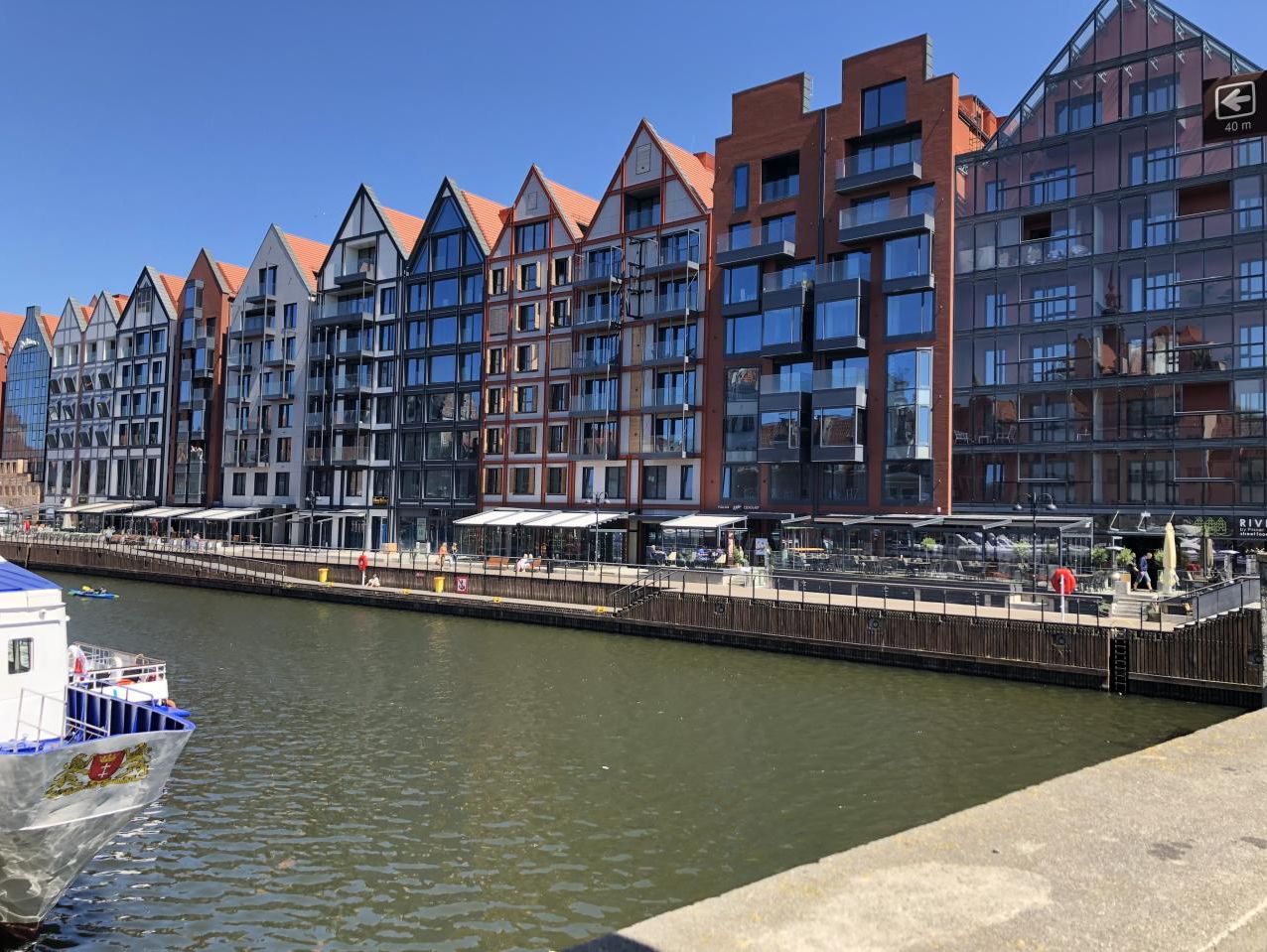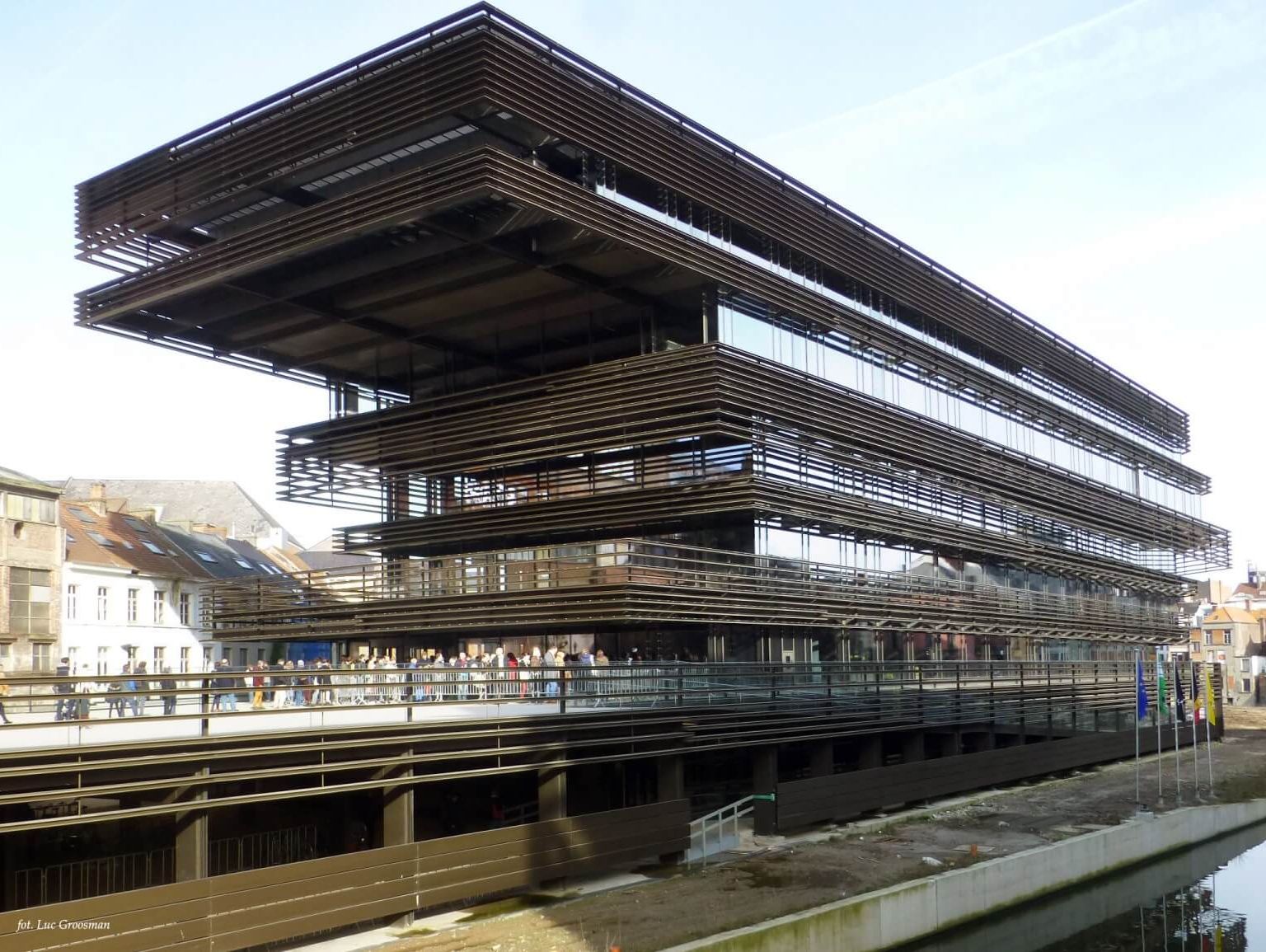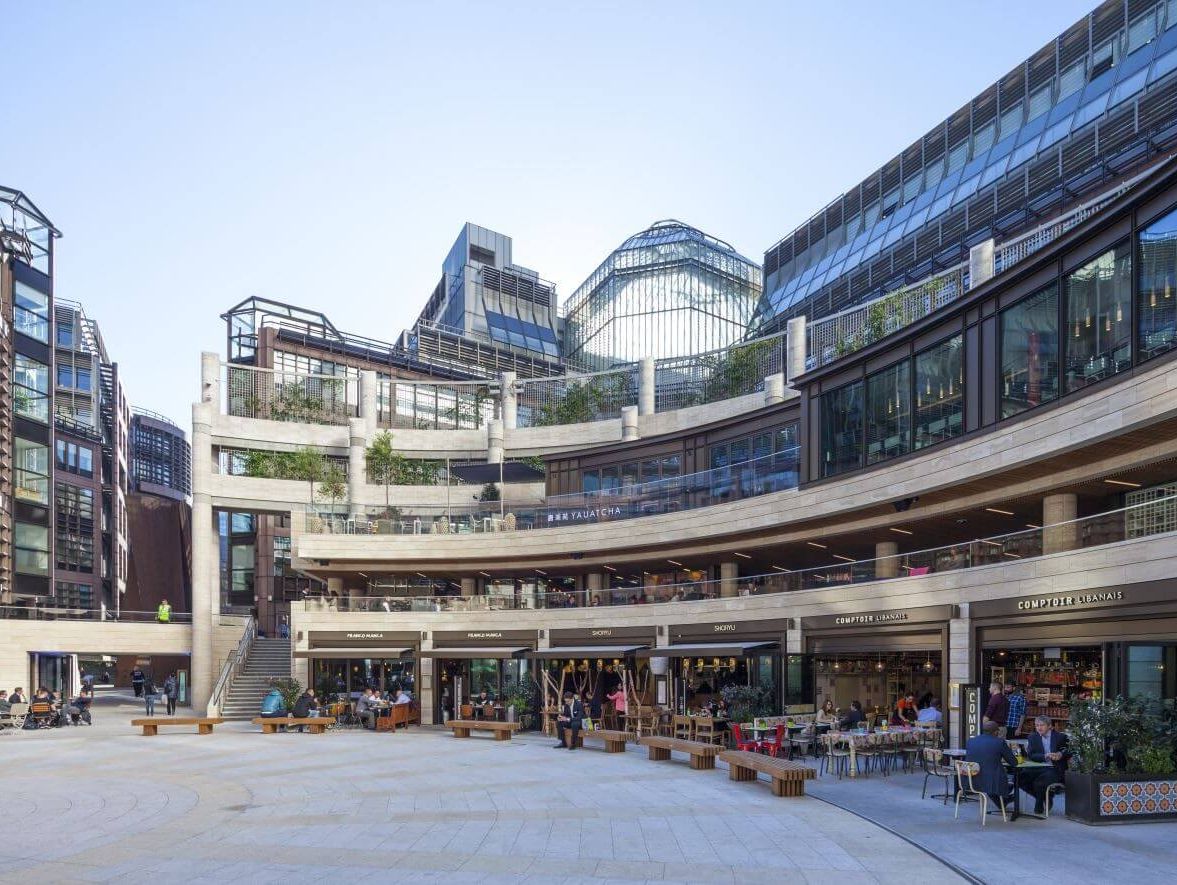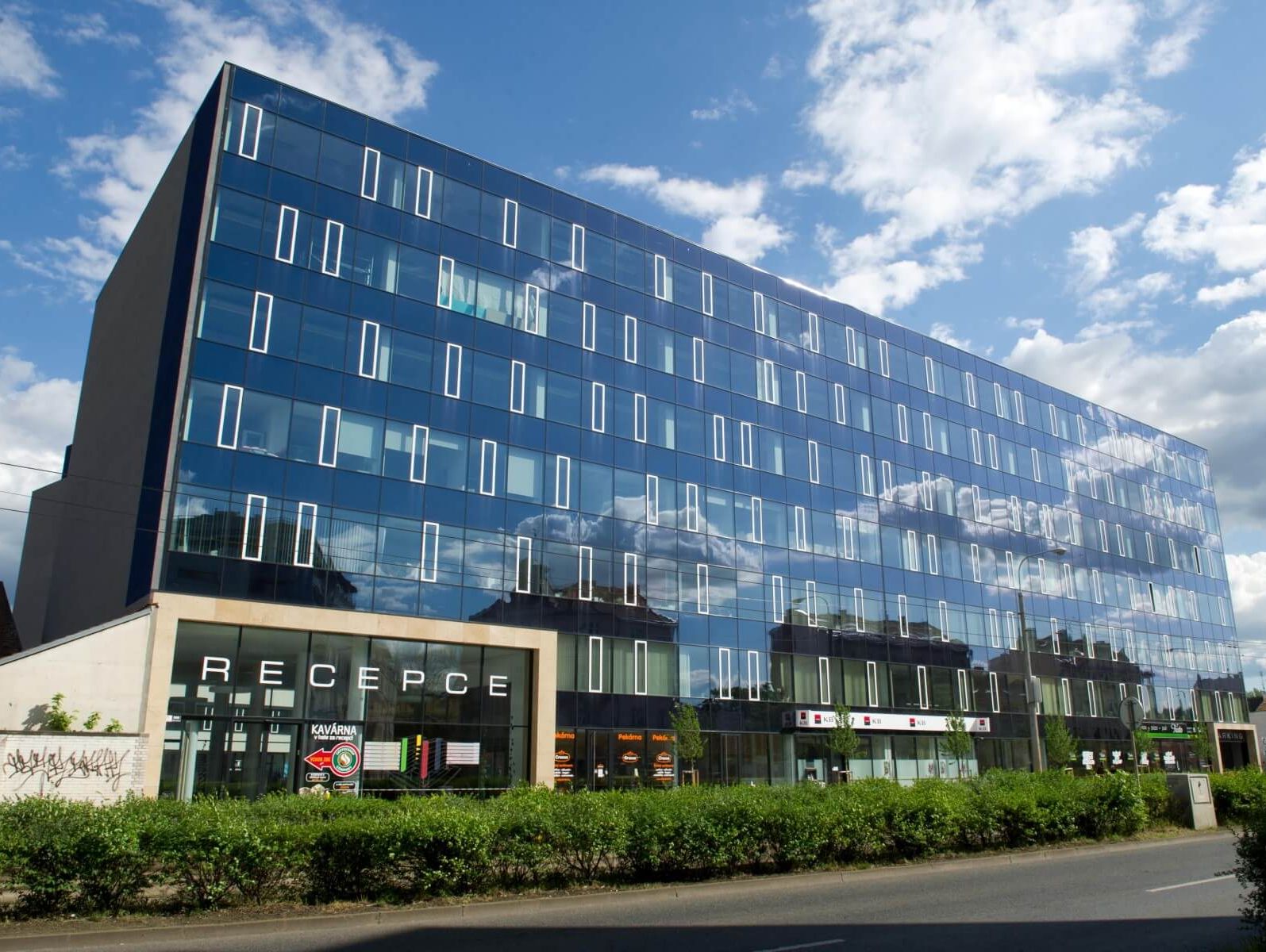Urbanisation and cities of the future – 6 megatrends
The future is at hand
Each of us, in our own way, is trying to predict the future. What will it bring? How will it change the world as we know it? These questions are also fundamental for the construction industry, and finding the answer to them is of key importance in terms of planning the development of future construction technologies.
The future of the construction industry is a broad topic that is addressed from various points of view at every major conference on the subject. There are a number of different theories proposed by experts. However, most of them agree on several aspects. In this article, we take a look at the most promising construction trends that are already shaping the future of our cities. These trends are being successfully implemented in cities all over the world and – as we can see – bringing in a lot of positive changes.

Deo Plaza, Granary Island, Gdańsk, Poland. Systems used: EXTRABOND, MB-77HS HI, MB-78EI, MB-78EI DPA, MB-86 SI, MB-Slimline
6 construction trends for the cities of the future
Let us forget for a moment about flying cars and sky-high glazed skyscrapers. Let us also forget about dark, crowded neighbourhoods filled with smoke and neon lights. The visions of cities of the future as shown in pop culture are not necessarily consistent with the current building philosophy, which represents a completely different way of thinking and trends that are now starting to become popular, moving us in a completely different direction than the one envisaged by fantasy writers. Below, we present six of the most important trends, which will have the greatest impact on the shape of the cities of the future.
1. Urban resilience
The idea of resilient cities is aimed at making cities self-sufficient in the face of various external challenges. When Hurricane Katrina passed over New Orleans in 2005, it became apparent that the city was completely unprepared and for a long time could not return to normal functioning. It was then that the concept of ‘resilience’ began to gain importance. In contrast, when Tokyo was hit by an earthquake in 2011, the reconstruction process was initiated almost instantly thanks to the city authorities introducing the right mechanisms through infrastructural and investment projects, and optimising the procedures.
Resilience from the perspective of the cities of the future is not just about being prepared for a variety of political and economic circumstances or natural disasters. It is also about becoming independent of external factors, for example in terms of the production of electricity.
2. New life for old buildings
The technologies used in the modern construction differ from those used two or three decades ago. However, demolishing buildings to invest in new projects is very costly, not only in terms of the investor’s financial outlay, but also in terms of the environmental costs associated with carbon dioxide emissions.
A concept that is being increasingly widely promoted is the Cradle to Cradle model, as opposed to the outdated Cradle to Grave. Instead of demolishing old buildings, they are modernised and given new functions in order to keep them ‘alive’ for as long as possible.
It is worth noting that when carrying out revitalisation projects, preference is given to more natural or recyclable raw materials. An excellent example is aluminium, which can be recycled indefinitely. What is more, recycling can save up to 95% of the energy required for the production of aluminium from scratch.
Aluminium also has another advantage. Since it is highly malleable, it can be used to produce customised window and door systems as part of revitalisation projects.
‘The MB-Ferroline system makes it possible to install modern windows without having to remove the old frames. This minimises the risk of damaging the masonry around the windows’, observes Tomáš Buček, project business manager of Aluprof System Czech s.r.o. ‘The visible width of the aluminium profiles has been adjusted to not cause significant discrepancies between the external look of the old and new windows. Proven solutions and a whole range of new profiles with appropriate shapes make it possible to create structures that perfectly match the character of the building’, he adds.

De Krook, Ghent, Belgium. Systems used: MB-78EI, MB-86 SI, MB-SR50N A
3. Putting people first
The city of the future will be a place that puts people first. This means more investments in, for example, footpaths, bicycle paths and better transport infrastructure. An excellent example is the Scandinavian metropolises of Oslo and Copenhagen, which for a long time have been focusing on the development of public transport and the reduction of car traffic.
However, people-oriented measures are not only about an extensive transport network. Such measures should also focus on providing places to socialise and meet all the needs of the city’s residents. An example of these are the so-called ‘hubs’, which are public spaces aimed at integrating the local community, with cafés, shops and various other services.
The people-oriented trend also encompasses an environmental dimension, since ecology will play a very important role in the cities of the future.

Broadgate Circle, London, United Kingdom. Systems used: MB-59S, MB-SR50N
4. Architecture and biophilia
According to American biologist Edward O. Wilson, biophilia can be defined as the need for a sense of community with other living organisms. The trend of designing urban spaces based on this concept involves incorporating local landscape features and native vegetation into construction projects.
The cities of the future will pay a great deal of attention to ecological, ‘green’ aspects. Part of this trend will be specially developed pocket parks.
Combining nature and architecture is a concept that has been alive for many decades. Over the coming years, this trend will be adapted on a wider scale, both when it comes to the primary and secondary market. Solutions of this type include rooftop gardens and lawns, vertical forests and squares in urban spaces.
5. Climate neutrality
Another trend in cities of the future is related to their climate neutrality. The high amount of carbon dioxide generated by urbanised areas makes it necessary to introduce technologies to reduce the carbon footprint of cities.
This involves various measures, such as investments in passive housing (which will also have an impact on the shape of the designed structures), photovoltaic technologies, rainwater harvesting and utilisation, as well as minimising the heat loss of buildings, thus optimising the use of energy necessary for their cooling or heating.
6. Reurbanisation
The last of the trends we would like to mention is the reurbanisation of city centres, which is the opposite of the trend that has been popular until recently and involved moving out of the inner city to settle down in the suburbs. What is currently observed and likely to continue in the near future is the reversal of this trend, with more and more people returning to city centres to live there.
This eliminates the need for a car and makes better use of public transport and urban infrastructure to move around. Hence, city centres will be the focus in terms of projects involving the construction of residential and service buildings to provide their residents with access to a wide range of essential solutions that are often within walking distance.

BC Titanium, Brno, Czech Republic. Systems used: MB-45, MB-70HI, MB-78EI, MB-SR50N
Let’s build a better future
The cities of the future will be self-sufficient urban centres, ready to counteract many adverse external factors. They will provide all the necessary infrastructure for their residents, including green areas and places for the integration of local communities. A third important element of the cities of the future will be ecology and solutions to protect the environment.
The construction industry plays a major role in many of the mentioned trends. In order to develop and create a better future for all people, it must follow them or even promote new ones for the decades to come.
